A couple of weeks ago, someone asked me why hinges traditionally come in pairs. I asked two of my favorite hinge experts – Matt Bouchard and Bob Jutzi, and they both gave me a variation of the same answer. In the 17th and 18th centuries there were 2 hinges on a door, so they were sold in pairs because you’d never use just one. In the early 1950’s it was determined that a 3rd hinge would supply additional support and that became the standard. Our industry called that “a pair and a half” of hinges. There’s some great hinge history at www.hardwaresource.com in case there’s other hinge trivia you’ve been wondering about.
 Last week I went to check on one of my favorite and most challenging projects – the Museum of Fine Arts in Boston. Just recently I ran into someone who said he hadn’t seen me since I attended an MFA security meeting on the day I was due to have my 3-year-old daughter, so I’ve been working on this project for quite a while. There’s still work to be done but it’s an AMAZING building. I felt kind of silly taking photos of doors when there are so many other beautiful details. The glass-enclosed courtyard is especially breathtaking and will be a wonderful space when it’s completed.
Last week I went to check on one of my favorite and most challenging projects – the Museum of Fine Arts in Boston. Just recently I ran into someone who said he hadn’t seen me since I attended an MFA security meeting on the day I was due to have my 3-year-old daughter, so I’ve been working on this project for quite a while. There’s still work to be done but it’s an AMAZING building. I felt kind of silly taking photos of doors when there are so many other beautiful details. The glass-enclosed courtyard is especially breathtaking and will be a wonderful space when it’s completed.
I saw the hinge/pivot in the video below on one of many stainless steel panels in the galleries. It’s made by an Italian company – Laboratorio Museotecnico Goppion. There’s some really cool hardware available, especially in Europe, that for some reason isn’t often used in the U.S. I’m seeing these products more often since several of my projects have European architects involved (the MFA was designed by Foster & Partners in London with CBT Architects in Boston).
Here are some images from my site visit. I’ll have more as the building gets closer to completion.
Hardware Supplier: Partitions Systems, Inc.
General Contractor: John Moriarty Associates
You need to login or register to bookmark/favorite this content.


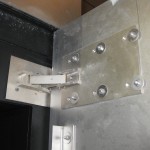
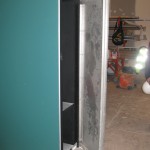
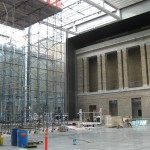
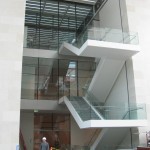
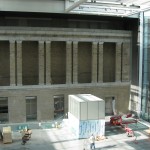
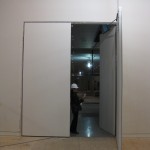

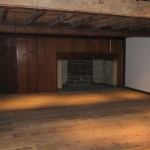
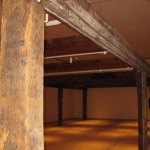
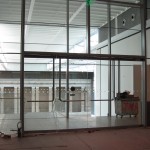
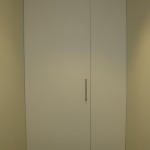
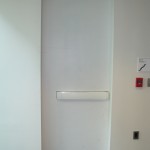
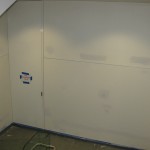




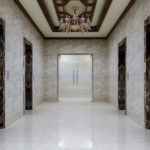

Ok I give why the sprinkler head between the two doors????
Being a fire inspector we see some strange things, another new one.
Not a fan of the white door on white wall with white panic hardware!!!
and what is with the standpipe sign??? Do you hook up to the sign???
I’d love to hear your feedback on this, actually. This is becoming a more common application – hardware that matches the door. In your opinion, is this door a problem? There are also aluminum doors available with a “panel” that acts as panic hardware. The codes aren’t specific on this issue so it comes down to each code official’s definition of what’s an obvious means of operation.
Would have to see the door in person.
To me the door blends into the wall just a little to much. You can use the same code section that was used for the soccer field.
Means of egress doors shall be readily distinguishable from the adjacent construction and finishes such that the doors are easily recognizable as doors. Mirrors or similar reflecting materials shall not be used on means of egress doors. Means of egress doors shall not be concealed by curtains, drapes, decorations or similar materials.
Have no problem with the door hardware.
check
http://inspectpa.com/phpbb/viewtopic.php?f=1&t=182